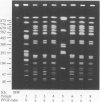Abstract
In 1994 we investigated a large outbreak of Burkholderia (formerly Pseudomonas) cepacia respiratory tract acquisition. A case patient was defined as any patient with at least one sputum culture from which B. cepacia was isolated from 1 January to 31 December 1994. Seventy cases were identified. Most (40 [61%]) occurred between 1 February and 31 March 1994; of these, 35 (86%) were mechanically ventilated patients, 30 of whom were in an intensive-care unit (ICU) when B. cepacia was first isolated. Compared with control patients who were mechanically ventilated in an ICU, these 30 case-patients were significantly more likely to have been ventilated for 2 or more days (30/30 v. 15/30; P < 0.001) or to have been intubated more than once (12/30 v. 2/30; OR = 9.3, 95% CI 1.6-68.8; P = 0.002) before the first isolation of B. cepacia. By multivariate analysis, the 35 mechanically ventilated case-patients were significantly more likely to have received a nebulized medication (OR = 11.9, 95% CI = 1.6-553.1; P < 0.001) and a cephalosporin antimicrobial (OR = 11.9, 95% CI = 1.6-553.1) in the 10 days before the first isolation of B. cepacia, compared with B. cepacia-negative control-patients matched by date and duration of most recent mechanical ventilation. Although B. cepacia was not cultured from medications or the hospital environment, all outbreak strains tested had an identical DNA restriction endonuclease digestion pattern by pulsed-field gel electrophoresis. Review of respiratory therapy procedures revealed opportunities for contamination of nebulizer reservoirs. This investigation suggests that careful adherence to standard procedures for administration of nebulized medications is essential to prevent nosocomial respiratory infections.
Full text
PDF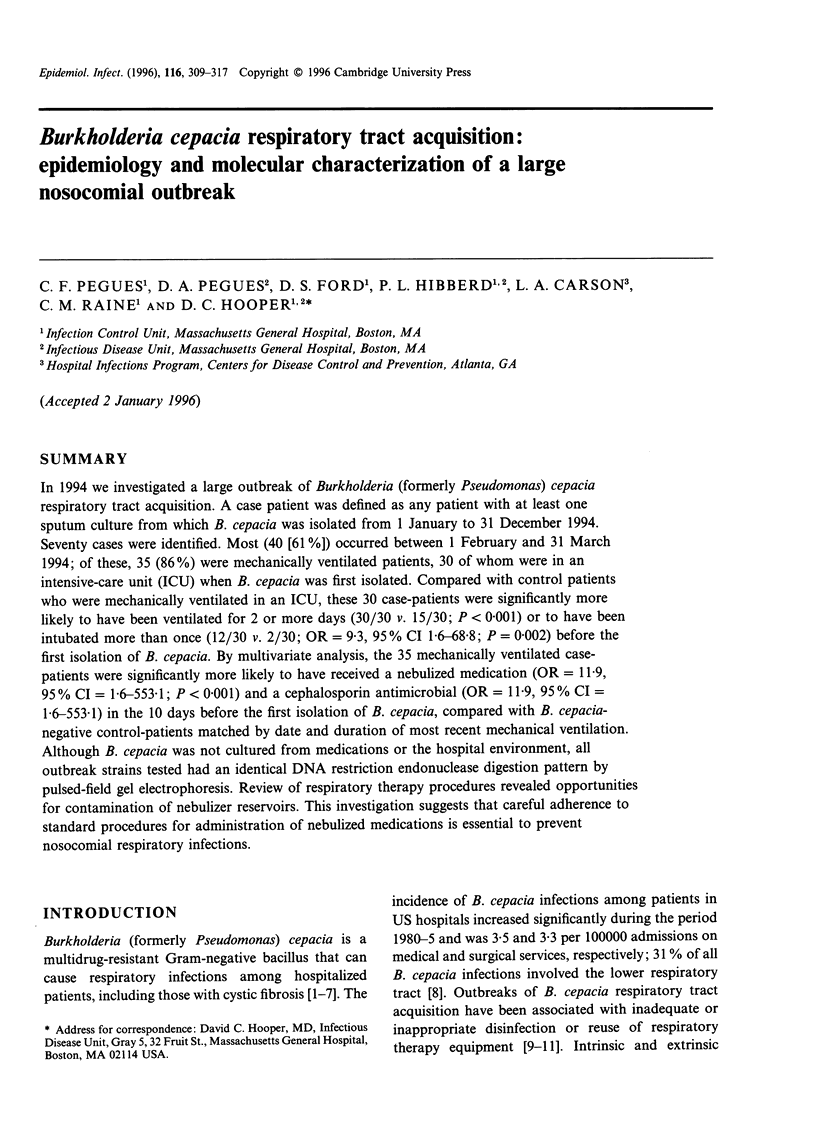
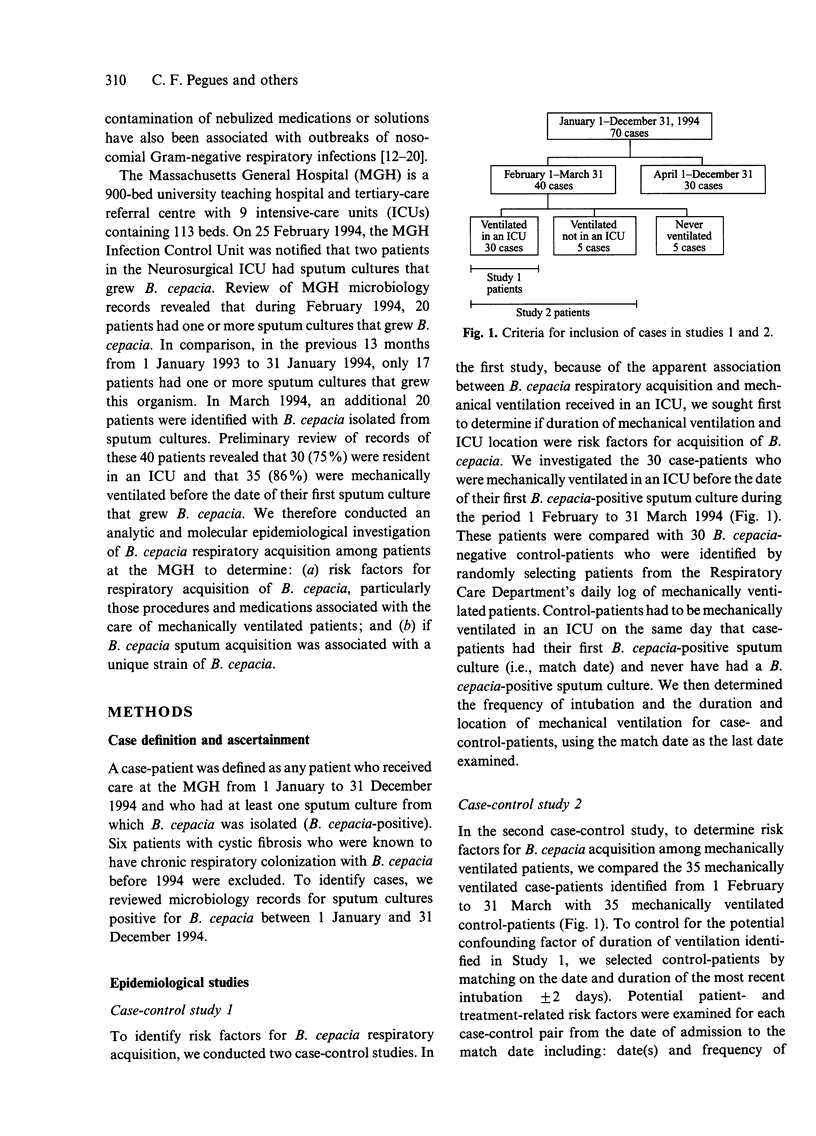
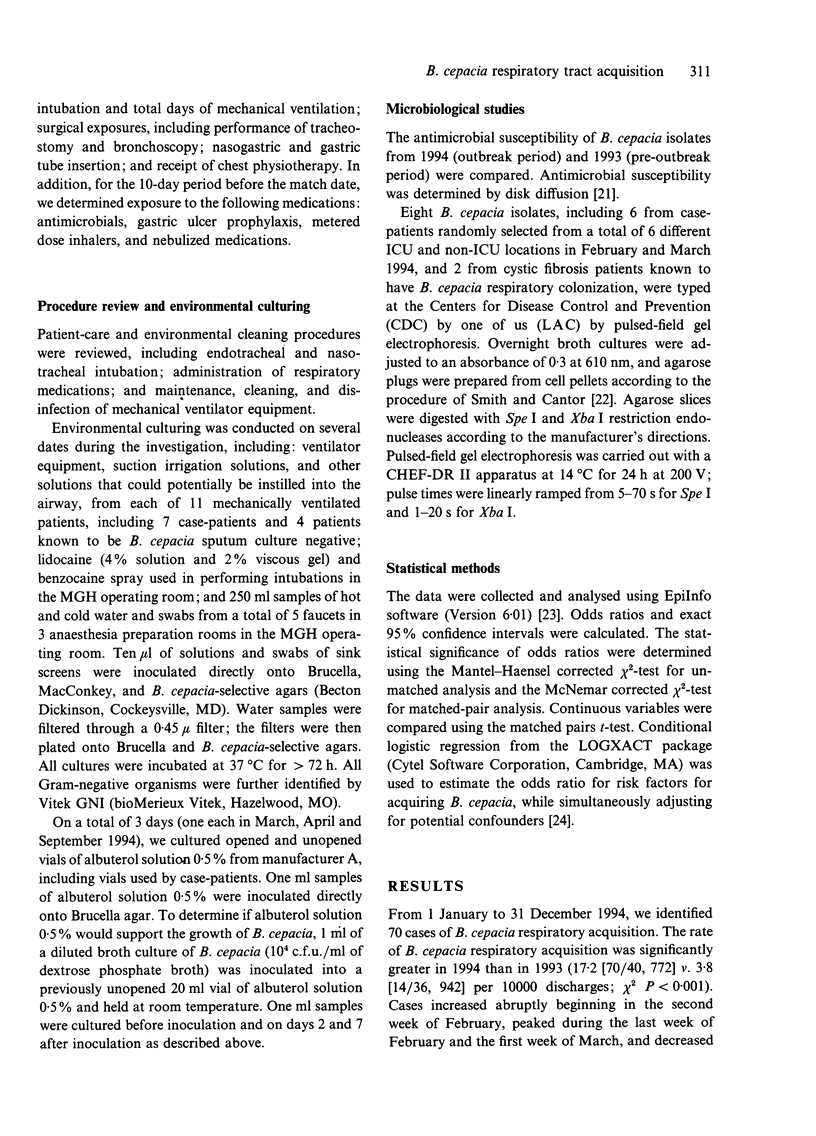
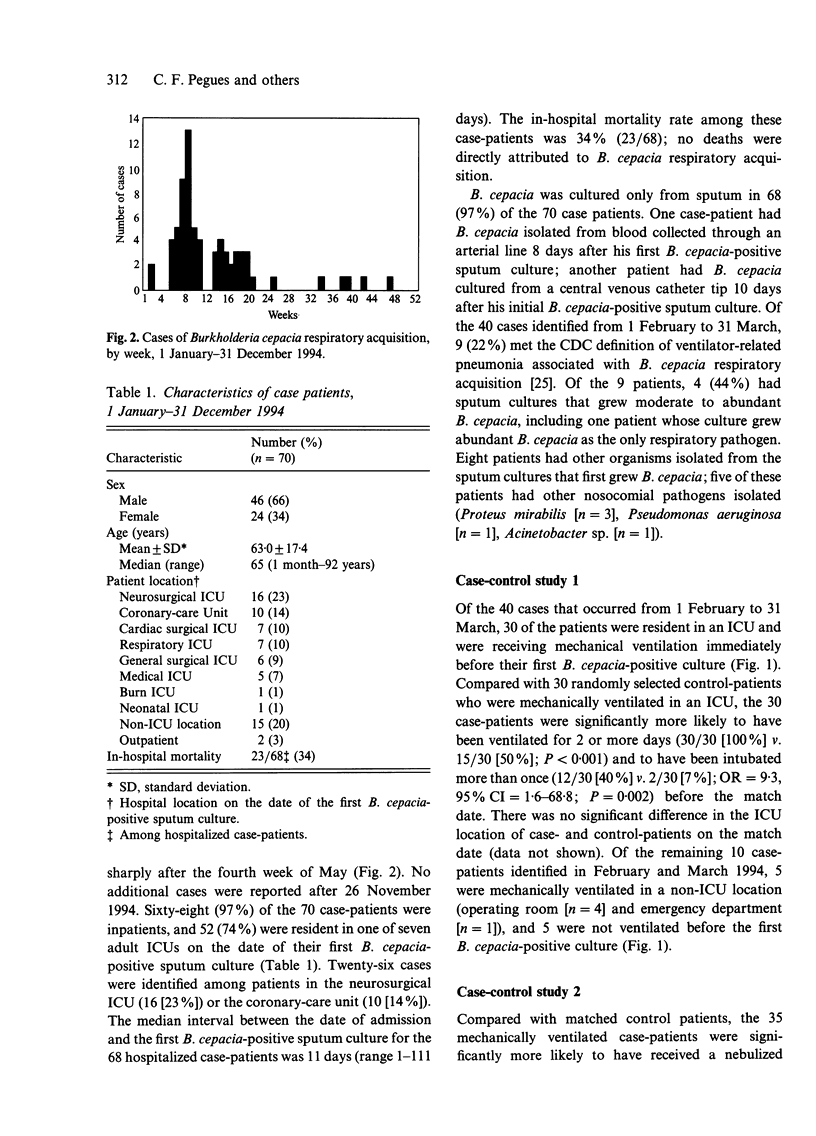
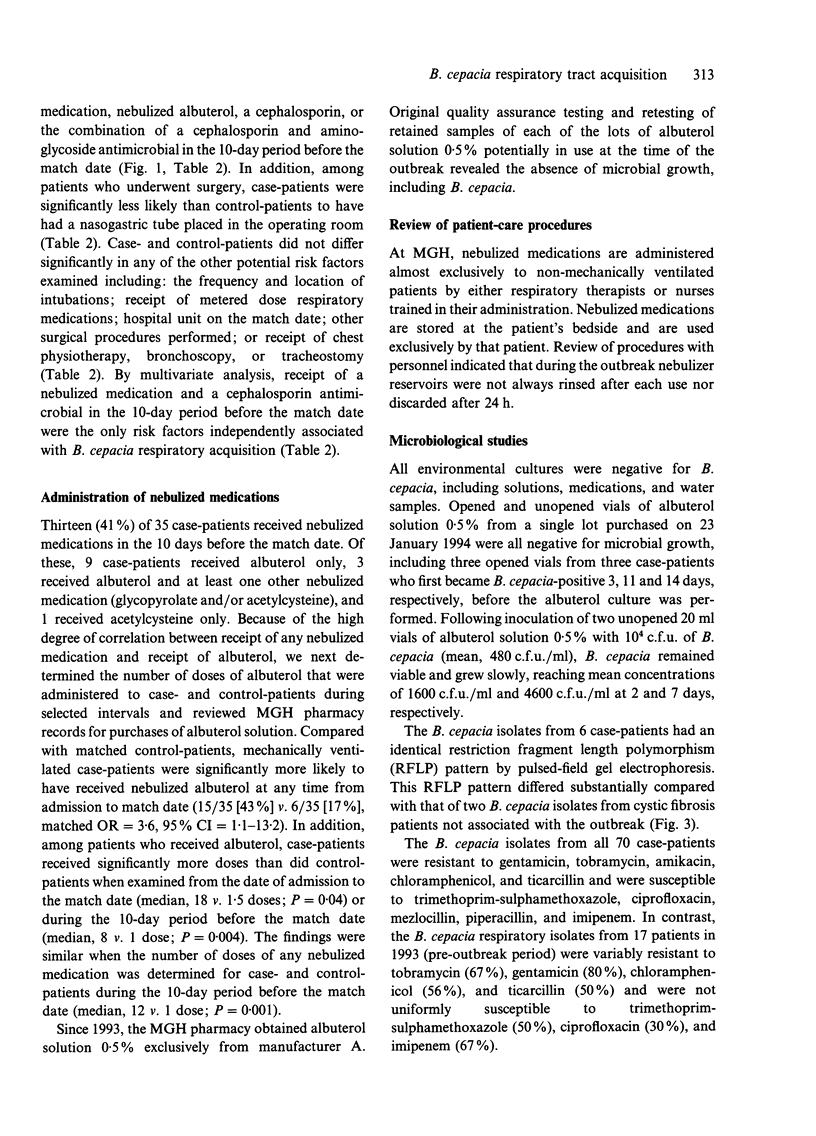
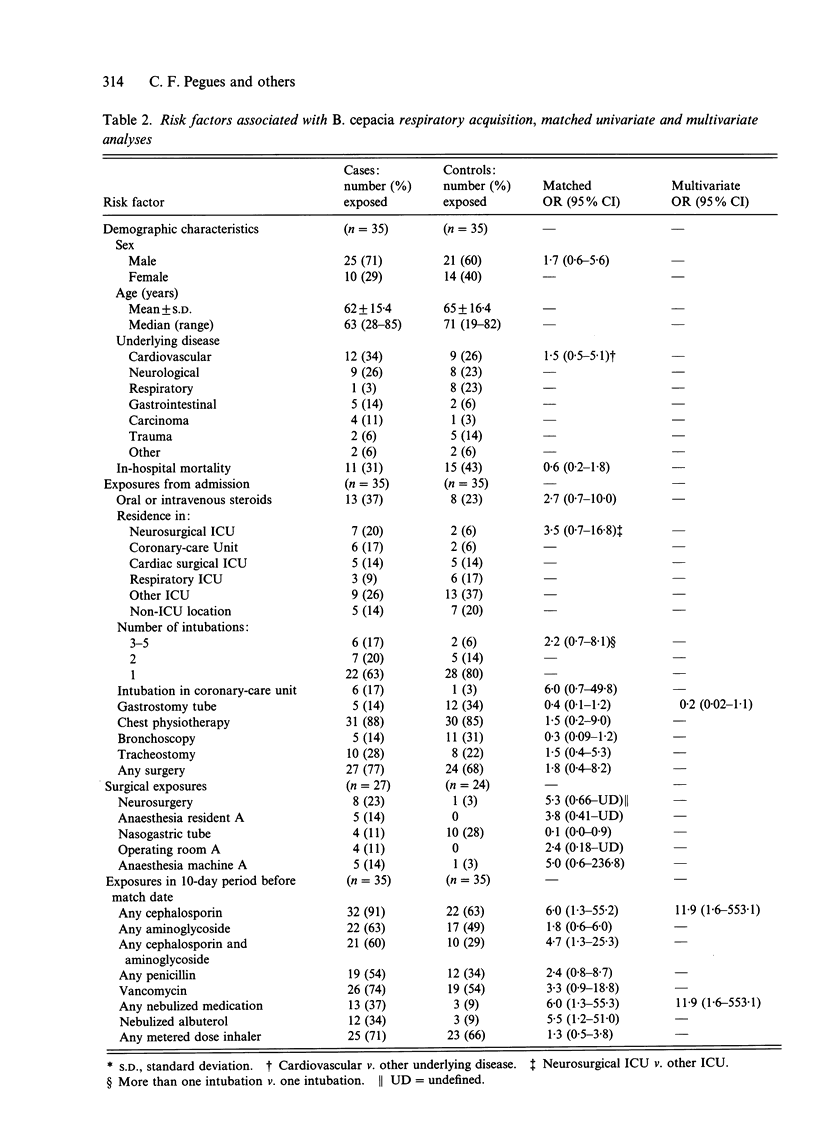
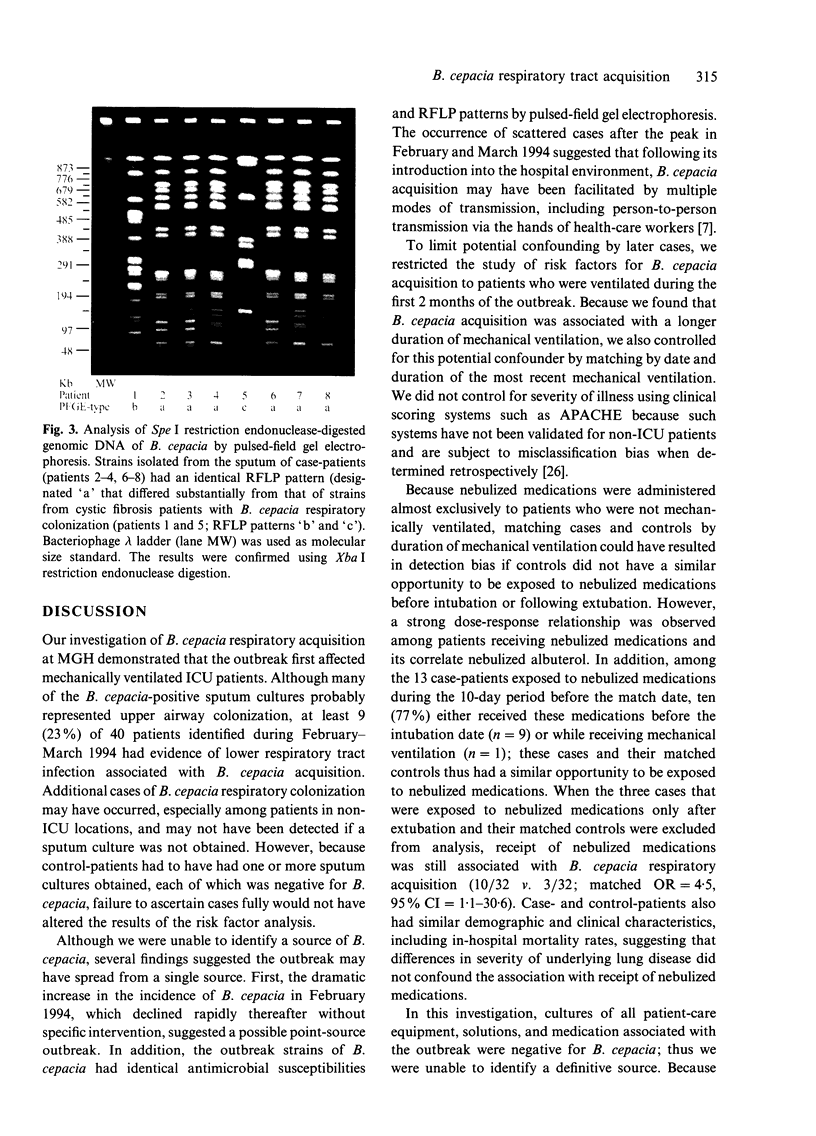
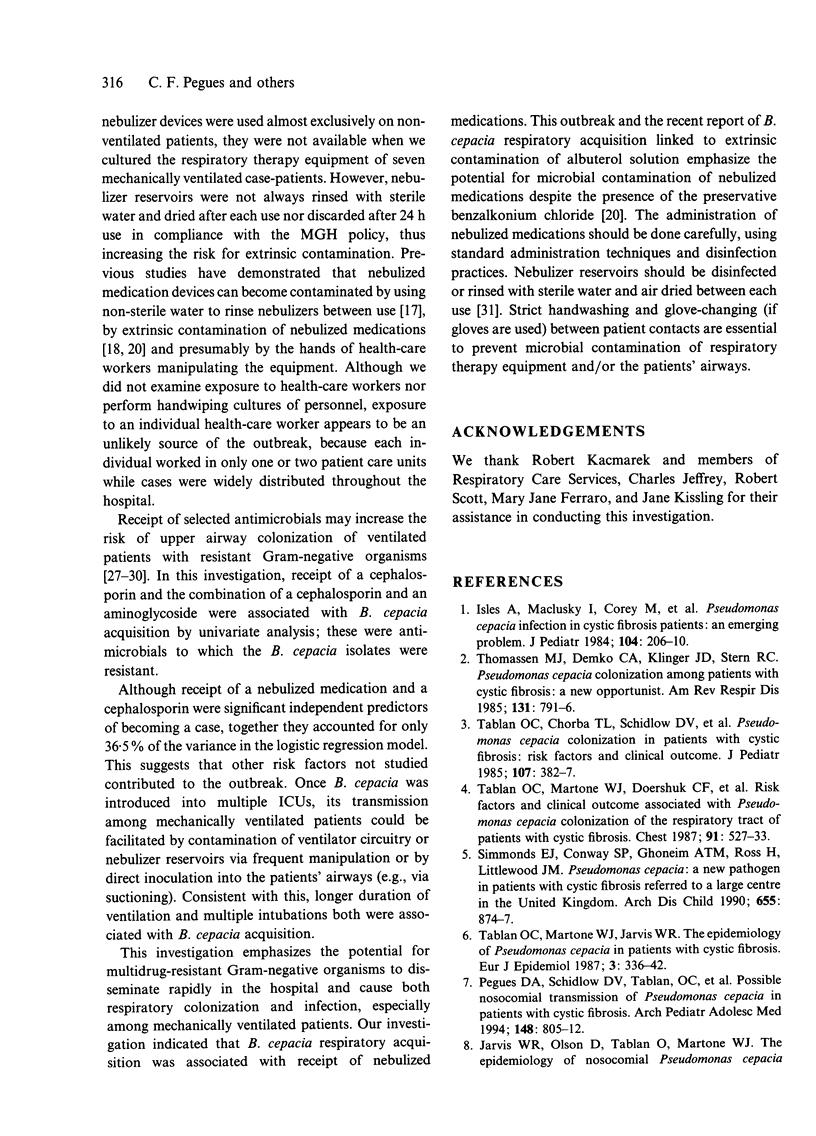
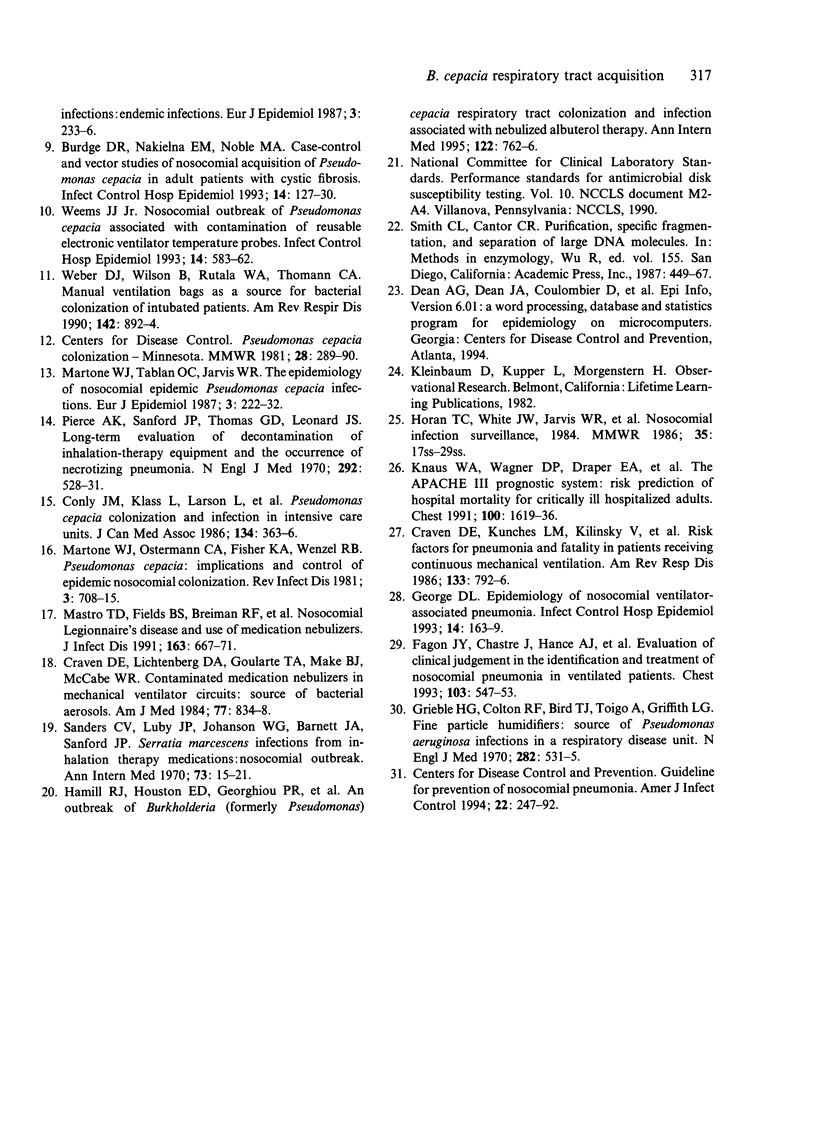
Images in this article
Selected References
These references are in PubMed. This may not be the complete list of references from this article.
- Burdge D. R., Nakielna E. M., Noble M. A. Case-control and vector studies of nosocomial acquisition of Pseudomonas cepacia in adult patients with cystic fibrosis. Infect Control Hosp Epidemiol. 1993 Mar;14(3):127–130. doi: 10.1086/646697. [DOI] [PubMed] [Google Scholar]
- Centers for Disease Control (CDC) Update: acquired immunodeficiency syndrome--United States. MMWR Morb Mortal Wkly Rep. 1986 Jan 17;35(2):17–21. [PubMed] [Google Scholar]
- Conly J. M., Klass L., Larson L., Kennedy J., Low D. E., Harding G. K. Pseudomonas cepacia colonization and infection in intensive care units. CMAJ. 1986 Feb 15;134(4):363–366. [PMC free article] [PubMed] [Google Scholar]
- Craven D. E., Kunches L. M., Kilinsky V., Lichtenberg D. A., Make B. J., McCabe W. R. Risk factors for pneumonia and fatality in patients receiving continuous mechanical ventilation. Am Rev Respir Dis. 1986 May;133(5):792–796. [PubMed] [Google Scholar]
- Craven D. E., Lichtenberg D. A., Goularte T. A., Make B. J., McCabe W. R. Contaminated medication nebulizers in mechanical ventilator circuits. Source of bacterial aerosols. Am J Med. 1984 Nov;77(5):834–838. doi: 10.1016/0002-9343(84)90520-5. [DOI] [PubMed] [Google Scholar]
- Fagon J. Y., Chastre J., Hance A. J., Domart Y., Trouillet J. L., Gibert C. Evaluation of clinical judgment in the identification and treatment of nosocomial pneumonia in ventilated patients. Chest. 1993 Feb;103(2):547–553. doi: 10.1378/chest.103.2.547. [DOI] [PubMed] [Google Scholar]
- George D. L. Epidemiology of nosocomial ventilator-associated pneumonia. Infect Control Hosp Epidemiol. 1993 Mar;14(3):163–169. doi: 10.1086/646705. [DOI] [PubMed] [Google Scholar]
- Grieble H. G., Colton F. R., Bird T. J., Toigo A., Griffith L. G. Fine-particle humidifiers. Source of Pseudomonas aeruginosa infections in a respiratory-disease unit. N Engl J Med. 1970 Mar 5;282(10):531–535. doi: 10.1056/NEJM197003052821003. [DOI] [PubMed] [Google Scholar]
- Hamill R. J., Houston E. D., Georghiou P. R., Wright C. E., Koza M. A., Cadle R. M., Goepfert P. A., Lewis D. A., Zenon G. J., Clarridge J. E. An outbreak of Burkholderia (formerly Pseudomonas) cepacia respiratory tract colonization and infection associated with nebulized albuterol therapy. Ann Intern Med. 1995 May 15;122(10):762–766. doi: 10.7326/0003-4819-122-10-199505150-00005. [DOI] [PubMed] [Google Scholar]
- Isles A., Maclusky I., Corey M., Gold R., Prober C., Fleming P., Levison H. Pseudomonas cepacia infection in cystic fibrosis: an emerging problem. J Pediatr. 1984 Feb;104(2):206–210. doi: 10.1016/s0022-3476(84)80993-2. [DOI] [PubMed] [Google Scholar]
- Jarvis W. R., Olson D., Tablan O., Martone W. J. The epidemiology of nosocomial Pseudomonas cepacia infections: endemic infections. Eur J Epidemiol. 1987 Sep;3(3):233–236. doi: 10.1007/BF00149729. [DOI] [PubMed] [Google Scholar]
- Knaus W. A., Wagner D. P., Draper E. A., Zimmerman J. E., Bergner M., Bastos P. G., Sirio C. A., Murphy D. J., Lotring T., Damiano A. The APACHE III prognostic system. Risk prediction of hospital mortality for critically ill hospitalized adults. Chest. 1991 Dec;100(6):1619–1636. doi: 10.1378/chest.100.6.1619. [DOI] [PubMed] [Google Scholar]
- Martone W. J., Osterman C. A., Fisher K. A., Wenzel R. P. Pseudomonas cepacia: implications and control of epidemic nosocomial colonization. Rev Infect Dis. 1981 Jul-Aug;3(4):708–715. doi: 10.1093/clinids/3.4.708. [DOI] [PubMed] [Google Scholar]
- Martone W. J., Tablan O. C., Jarvis W. R. The epidemiology of nosocomial epidemic Pseudomonas cepacia infections. Eur J Epidemiol. 1987 Sep;3(3):222–232. doi: 10.1007/BF00149728. [DOI] [PubMed] [Google Scholar]
- Mastro T. D., Fields B. S., Breiman R. F., Campbell J., Plikaytis B. D., Spika J. S. Nosocomial Legionnaires' disease and use of medication nebulizers. J Infect Dis. 1991 Mar;163(3):667–671. doi: 10.1093/infdis/163.3.667. [DOI] [PubMed] [Google Scholar]
- Pegues D. A., Schidlow D. V., Tablan O. C., Carson L. A., Clark N. C., Jarvis W. R. Possible nosocomial transmission of Pseudomonas cepacia in patients with cystic fibrosis. Arch Pediatr Adolesc Med. 1994 Aug;148(8):805–812. doi: 10.1001/archpedi.1994.02170080035006. [DOI] [PubMed] [Google Scholar]
- Pierce A. K., Sanford J. P., Thomas G. D., Leonard J. S. Long-term evaluation of decontamination of inhalation-therapy equipment and the occurrence of necrotizing pneumonia. N Engl J Med. 1970 Mar 5;282(10):528–531. doi: 10.1056/NEJM197003052821002. [DOI] [PubMed] [Google Scholar]
- Sanders C. V., Jr, Luby J. P., Johanson W. G., Jr, Barnett J. A., Sanford J. P. Serratia marcescens infections from inhalation therapy medications: nosocomial outbreak. Ann Intern Med. 1970 Jul;73(1):15–21. doi: 10.7326/0003-4819-73-1-15. [DOI] [PubMed] [Google Scholar]
- Simmonds E. J., Conway S. P., Ghoneim A. T., Ross H., Littlewood J. M. Pseudomonas cepacia: a new pathogen in patients with cystic fibrosis referred to a large centre in the United Kingdom. Arch Dis Child. 1990 Aug;65(8):874–877. doi: 10.1136/adc.65.8.874. [DOI] [PMC free article] [PubMed] [Google Scholar]
- Smith C. L., Cantor C. R. Purification, specific fragmentation, and separation of large DNA molecules. Methods Enzymol. 1987;155:449–467. doi: 10.1016/0076-6879(87)55030-3. [DOI] [PubMed] [Google Scholar]
- Tablan O. C., Chorba T. L., Schidlow D. V., White J. W., Hardy K. A., Gilligan P. H., Morgan W. M., Carson L. A., Martone W. J., Jason J. M. Pseudomonas cepacia colonization in patients with cystic fibrosis: risk factors and clinical outcome. J Pediatr. 1985 Sep;107(3):382–387. doi: 10.1016/s0022-3476(85)80511-4. [DOI] [PubMed] [Google Scholar]
- Tablan O. C., Martone W. J., Doershuk C. F., Stern R. C., Thomassen M. J., Klinger J. D., White J. W., Carson L. A., Jarvis W. R. Colonization of the respiratory tract with Pseudomonas cepacia in cystic fibrosis. Risk factors and outcomes. Chest. 1987 Apr;91(4):527–532. doi: 10.1378/chest.91.4.527. [DOI] [PubMed] [Google Scholar]
- Tablan O. C., Martone W. J., Jarvis W. R. The epidemiology of Pseudomonas cepacia in patients with cystic fibrosis. Eur J Epidemiol. 1987 Dec;3(4):336–342. doi: 10.1007/BF00145642. [DOI] [PubMed] [Google Scholar]
- Thomassen M. J., Demko C. A., Klinger J. D., Stern R. C. Pseudomonas cepacia colonization among patients with cystic fibrosis. A new opportunist. Am Rev Respir Dis. 1985 May;131(5):791–796. doi: 10.1164/arrd.1985.131.5.791. [DOI] [PubMed] [Google Scholar]
- Weber D. J., Wilson M. B., Rutala W. A., Thomann C. A. Manual ventilation bags as a source for bacterial colonization of intubated patients. Am Rev Respir Dis. 1990 Oct;142(4):892–894. doi: 10.1164/ajrccm/142.4.892. [DOI] [PubMed] [Google Scholar]
- Weems J. J., Jr Nosocomial outbreak of Pseudomonas cepacia associated with contamination of reusable electronic ventilator temperature probes. Infect Control Hosp Epidemiol. 1993 Oct;14(10):583–586. doi: 10.1086/646642. [DOI] [PubMed] [Google Scholar]



